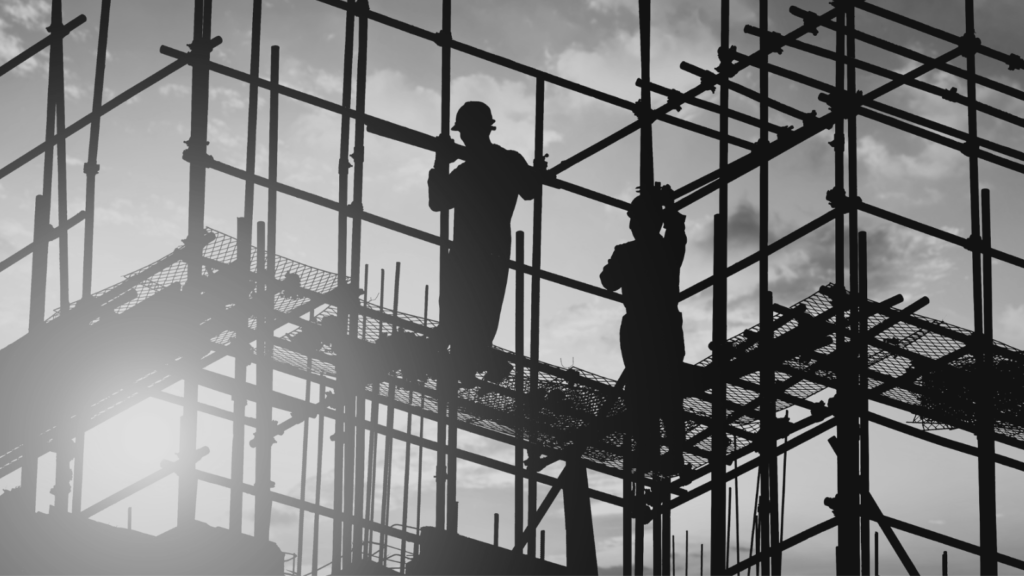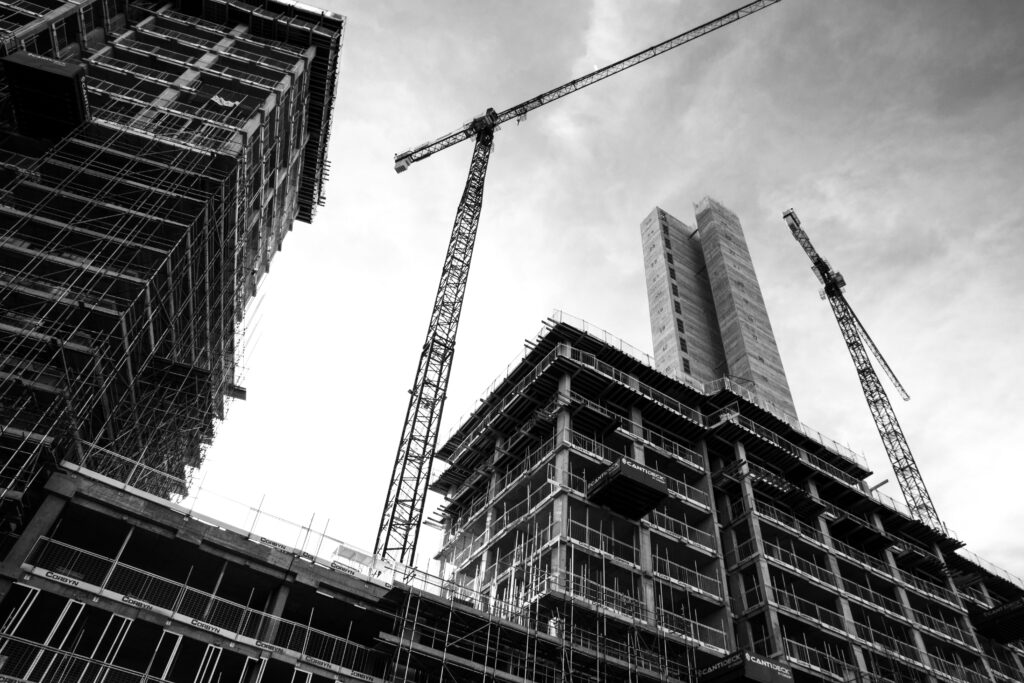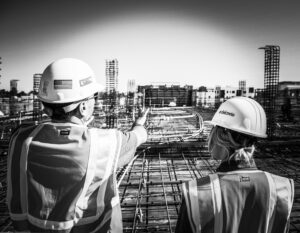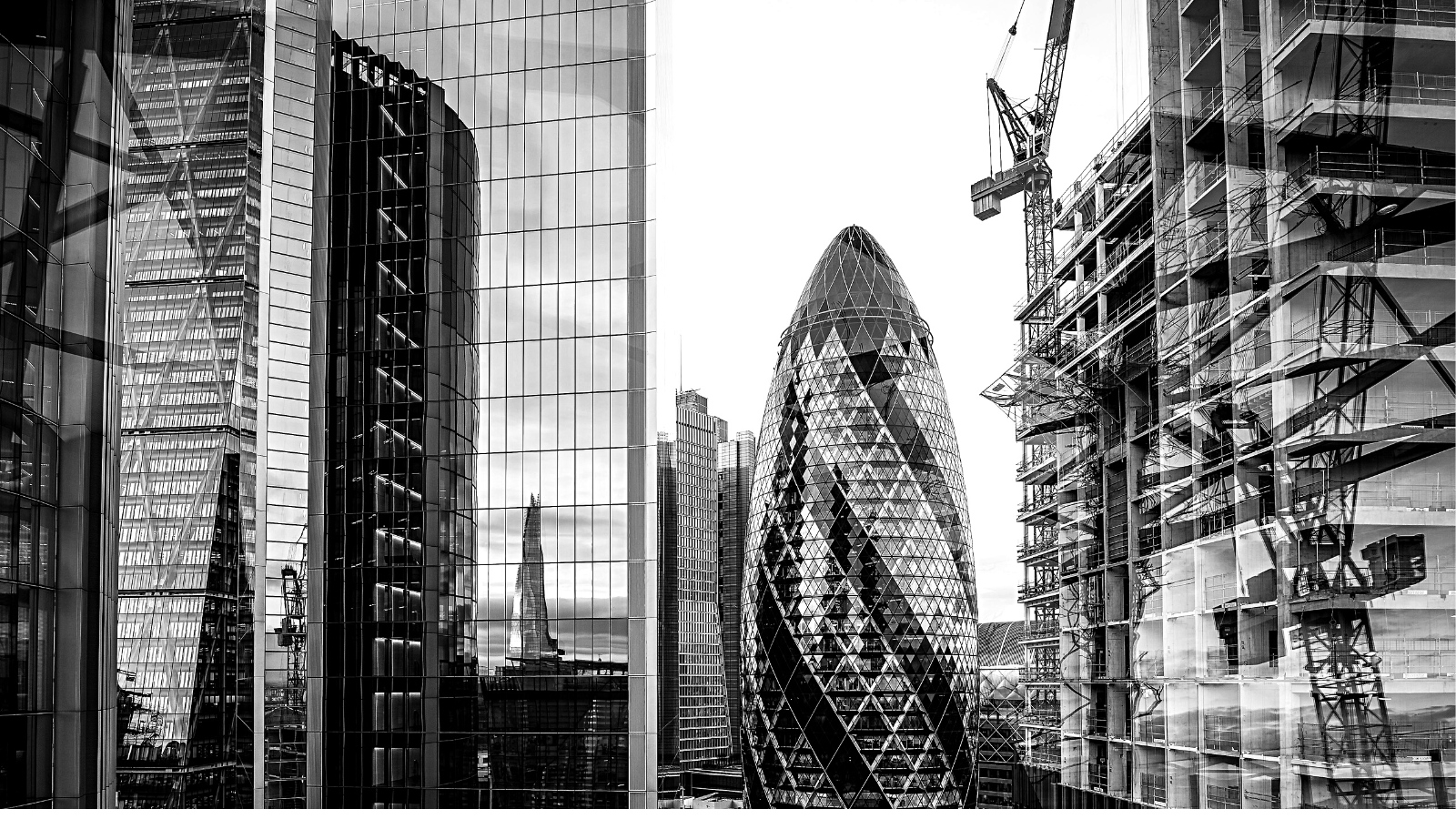In the first of a two-part article, Ian Quayle, CEO, IQ Legal Training, provides answers to the top queries resulting from a recent webinar on the Building Safety Act
Introduction
The Building Safety Act 2022 is another piece of legislation that is problematic for transactional property lawyers, landlords (and those advising them), management companies and surveyors.
Ian Quayle recently delivered a webinar on this topic and in this article, he provides information in response to the numerous questions which subsequently followed.
Q1. How do you suggest we ‘scope’ the retainer in relation to these certificates? What do we include or exclude?
A1. In order to scope the retainer, I suggest the retainer should explain the following:
- That the firm cannot advise as to the content of either the landlord certificate or leaseholder deed of certificate which are required by the Building Safety Act 2022.
- Both documents may provide information concerning remediation costs incurred by the landlord or paid for by the seller or previous owners of the property relating to building or fire safety. If you need to know about that information or want to know more about remediation costs, please take the matter up with your valuer or surveyor.
- It is important to appreciate that the landlord can recover expenses it incurs in connection with the provision of services some of which might relate to building or fire safety remediation. Specialist advice might be required. Your surveyor or valuer should be consulted.
Q2. I am now frequently being asked about fire breaks between apartments (i.e., between ceilings and the floors above) in addition to the walls. We are not going to know if the building is older, or perhaps whether it has been recently constructed. What do we do here?
A2. The seller client is unlikely to know whether there are fire breaks or whether there are any issues in connection with wall cavities. The Conveyancing Protocol prevents enquiries of this nature. Where an enquiry has been raised the response could be either that it is not necessary for the seller to respond as the enquiry is not Protocol compliant, or simply that the seller does not know, and has no way of knowing, and the buyer should therefore seek clarification and information from their surveyor or valuer.
Q3. I think we may have an issue with the small residents-run management companies or freeholders who will most likely not be aware of this stuff. What suggestions do you have?
A3. Management companies and smaller or inexperienced landlords are a major problem. If acting for such landlords, I suggest that they are provided with as much information as possible including UK Government guidelines regarding a building owner’s legal obligations which are available on the GOV.UK website here, as well as information from the Leasehold Advisory Service regarding the new fire safety regulations coming into effect.
Q4. Why the 6m difference in height do we know?
A4. The 18-metre and 11-metre heights appear to have been chosen because 18 metres used to be the height above which new builds had to be installed with sprinkler systems and this has now been lowered to 11 metres. More information is available in this interesting article on the University of Oxford’s Law Faculty blog regarding ‘Housing after Grenfell’ available here.

Q5. If a seller is signing a Leaseholder’s Certificate – what is the liability on them? Or is it simply a case of protecting the incoming buyer if they are qualifying leaseholders?
A5. The Building Safety (Leaseholder Protections) (Information etc.) (England) Regulations 2022 provides some assistance. The model form of certificate specifies that the leaseholder must provide information as of 14.2.22 and there is a warning that dishonestly making a false representation or failing to disclose the information required may be a criminal offence under the Fraud Act 2006. A defective reply could render the leaseholder liable to a buyer under the Misrepresentation Act 1967.
Q6. What about ‘Polluter Pays’?
A6. This is an interesting point. The aim of the legislation is to create a hierarchy of liability starting with the contractors, builders etc., who install unsafe building materials or who utilise unsafe methods of construction. Then the owners of buildings or landlords who may be afforded government funding and or aid and only when the above is exhausted can leaseholders be liable under the service charge.
Q7. Should we be asking for Landlord’s Certificates on newbuilds?
A7. My view is that a certificate is not required on new builds. Section 119(2) of the BSA 2022 states that a qualifying lease for the purposes of the Act:
-
it is a long lease of a single dwelling in a relevant building,
-
the tenant under the lease is liable to pay a service charge,
-
the lease was granted before 14 February 2022, and
- at the beginning of 14 February 2022 (“the qualifying time”):
-
the dwelling was a relevant tenant’s only or principal home,
-
a relevant tenant did not own any other dwelling in the United Kingdom, or
-
a relevant tenant owned no more than two dwellings in the United Kingdom apart from their interest under the lease.
-
The certificate is aimed at providing information under the BSA 2022 concerning remediation costs and the BSA 2022 and the requirement for a landlord’s certificate only applies to qualifying leases.
Q8. In terms of practical ‘service’ of the Leaseholder’s Certificate on the Landlord and time scales for Landlord to respond – do we put a ‘Return Date’ on the notice and how do we calculate this?
A8. The Building Safety (Leaseholder Protections) (England) Regulations 2022 Regulation 6(1) requires a Landlord’s certificate to be provided:
- when the current landlord makes a demand to a leaseholder for the payment of a remediation service charge.
- within four weeks of receipt of notification from the leaseholder that the leasehold interest is to be sold.
- within four weeks of becoming aware (either themselves or by notification from another person) of a relevant defect not covered by a previous landlord’s certificate; or
- within four weeks of being requested to do so by the leaseholder.
It would appear the certificate is required in (a) at the same time the demand is made. For (b) and (d) it would be useful for evidential purposes for the leaseholder to specify when the four-week period commences and expires. Service should be effected as specified in the lease or should be compliant with Section 196 of the LPA (Local Planning Authorities) 1925 which applies to any notice:
- Required or authorised to be served or given by the LPA 1925.
- Required to be served or given by any instrument affecting property unless a contrary intention appears.
It would be important to check the lease to see how service is to be affected and to be safe I would maintain that the four-week period runs from the date of service.
Remember S.196 states:
- Notices must be in writing (section 196(1), LPA 1925).
- Notices do not have to be addressed using the name of the recipient, but can be addressed to “the tenant,” “the mortgagor” or “the persons interested” (section 196(2), LPA 1925).
- A notice is valid even if a person affected by it is absent, under a disability, unborn or unascertained (section 196(2), LPA 1925).
- Notices are sufficiently served by being left at the last known place of abode or business in the UK (section 196(3), LPA 1925).
- Notices are sufficiently served by being sent by post in a registered letter addressed to the party to be served at the last known place of abode or business in the UK (section 196(4), LPA 1925). A registered letter includes recorded delivery or Special Delivery.
Service is deemed to have been made at the time at which the registered letter would be delivered to the recipient in the ordinary course of post, regardless of when delivery was actually effected.

Q9. Are Landlords certificates only required where works are necessary?
A9. Where the flat or apartment is within a relevant building and the lease is a relevant lease then a landlord’s certificate is required in the circumstances prescribed in The Building Safety (Leaseholder Protections) (England) Regulations 2022 Regulation 6(1) which requires a Landlord’s certificate to be provided in the following circumstances:
- when the current landlord makes a demand to a leaseholder for the payment of a remediation service charge;
- within four weeks of receipt of notification from the leaseholder that the leasehold interest is to be sold;
- within four weeks of becoming aware (either themselves or by notification from another person) of a relevant defect not covered by a previous landlord’s certificate; or
- within four weeks of being requested to do so by the leaseholder.
Remember the BSA 2022 is aimed at ensuring landlords or other responsible persons are liable for remediation costs with a leaseholder only being liable as a last resort. The landlord’s certificate identifies the current landlord, previous landlords, and works undertaken since 28.6.2017 carried out to relevant safety defects as defined by the BSA 2022
Section 120 of the BSA defines “relevant defect”:
- This section applies for the purposes of sections 122 to 125 and Schedule 8.
- “Relevant defect,” in relation to a building, means a defect as regards the building that:
- arises as a result of anything done (or not done), or anything used (or not used), in connection with relevant works, and
- causes a building safety risk.
- In subsection (2) “relevant works” means any of the following:
- works relating to the construction or conversion of the building, if the construction or conversion was completed in the relevant period;
- works undertaken or commissioned by or on behalf of a relevant landlord or management company, if the works were completed in the relevant period;
- works undertaken after the end of the relevant period to remedy a relevant defect (including a defect that is a relevant defect by virtue of this paragraph).
- NB. “The relevant period” here means the period of 30 years ending with the time this section comes into force.
- In subsection (2) the reference to anything done (or not done) in connection with relevant works includes anything done (or not done) in the provision of professional services in connection with such works.
- For the purposes of this section:
- “Building safety risk,” in relation to a building, means a risk to the safety of people in or about the building arising from:
- the spread of fire, or
- the collapse of the building or any part of it.
- “conversion” means the conversion of the building for use (wholly or partly) for residential purposes.
- “Relevant landlord or management company” means a landlord under a lease of the building or any part of it or any person who is a party to such a lease otherwise than as landlord or tenant
- “Building safety risk,” in relation to a building, means a risk to the safety of people in or about the building arising from:
Q10. Is the leaseholder deed of certificate only required where works are necessary?
A10. The deed of certificate confirms whether the leaseholder is eligible for the leaseholder protection provided by the BSA 2022. The leaseholder can choose to complete and send a deed of certificate to the landlord at any time and is required to complete a deed of certificate if the landlord notifies you that one is required because the leaseholder is selling the property or because there is a relevant defect in the building. A failure to complete the certificate will mean the leaseholder will not be able to benefit from the protection of the BSA 2022.
If the landlord requires a deed of the certificate, they must notify you in writing by pre-paid first-class letter and by email, if they have your email address. They must give you at least 8 weeks to provide the certificate, and an additional 4 weeks if requested.
A leaseholder can complete the certificate at any time. A completed deed of the certificate should be sent to your landlord. Where the landlord requested the deed, it should provide a return address. The certificate or a copy should be passed to future owners on sale
A landlord must send leaseholders a request for a deed of the certificate within 5 days of finding out either that the leaseholder intends to sell your property, or that there is a relevant defect in the building. At least 8 weeks to provide the certificate. The period can be extended by a further four weeks if the leaseholder requests it.
The Leaseholder Deed of Certificate will provide the permanent record as to how the flat was owned or occupied on 14 February 2022, which is the critical reference date for the purposes of Schedule 8 of the BSA 2022.
As well as answering the questions, the leaseholder must also provide documentary evidence supporting the answers provided. Where the leaseholder completing a Deed of Certificate was not the owner of the flat on 14 February 2022 and does not already have the required information, that leaseholder must make enquiries of the former leaseholder to establish the qualifying status of the flat on 14 February 2022.

Q11. Does the Building Safety Act extend to BRA and extend S1 Defective Premises Act 1972 for ALL new properties? Not just flats?
A11. Correct – There is an interesting article on S1 of the Defective Premises Act 1972 and the case of Sportcity 4 Management Ltd and others v Countryside Properties (UK) Ltd [2020] written by Harry Marriot of St Ives Chambers – (stiveschambers.co.uk).
The BSA 2022 extends the timeframe for bringing claims under the Defective Premises Act 1972 (DPA, which requires the premises to be “unfit for habitation”) in two ways:
- Any claims under the DPA in relation to buildings completed after the Building Safety Act came into force (28 June 2022) can be commenced up to 15 years from the date of Practical Completion, rather than the standard 6 years.
- The inclusion of a retrospective 30-year limitation period in respect of buildings completed prior to the Act coming into force, in respect of DPA claims.
A 1-year initial grace period is provided for under the BSA 2022 before these provisions come into force to bring claims which would otherwise expire within that period i.e., which are close to the end of the 30-year limit.
Another change introduced by the BSA is a new section 2A of the DPA which extends potential liability to refurbishment or extension works, whereas previously the DPA had applied only to new buildings.
Q12. Do we need LL cert or Deed if NOT above 11m or 5 storeys under the Regulation of FSA 2023?
A12. A landlord’s certificate or a leaseholder deed of certificate is only required where the flat or apartment is in a relevant building.
Section 117 of the BSA 2022 defines a “relevant building”:
- This section applies for the purposes of sections 119 to 125 and Schedule 8.
- “Relevant building” means a self-contained building, or self-contained part of a building, in England that contains at least two dwellings and
- is at least 11 metres high, or
- has at least 5 storeys
- NB: This is subject to subsection (3).
- Relevant building” does not include a self-contained building or self-contained part of a building:
- in relation to which a right under Part 1 of the Landlord and Tenant Act 1987 (tenants’ right of first refusal) or Part 3 of that Act (compulsory acquisition by tenants of landlord’s interest) has been exercised,
- in relation to which the right to collective enfranchisement (within the meaning of Chapter 1 of Part 1 of the Leasehold Reform, Housing and Urban Development Act 1993) has been exercised,
- if the freehold estate in the building or part of the building is leaseholder owned (within the meaning of regulations made by the Secretary of State), or
- which is on commonhold land.
- For the purposes of this section a building is “self-contained” if it is structurally detached.
- For the purposes of this section a part of a building is “self-contained” if:
- the part constitutes a vertical division of the building,
- the structure of the building is such that the part could be redeveloped independently of the remainder of the building, and
- the relevant services provided for occupiers of that part:
- are provided independently of the relevant services provided for occupiers of the remainder of the building, or
- could be so provided without involving the carrying out of any works likely to result in a significant interruption in the provision of any such services for occupiers of the remainder of the building.
- In subsection (5) “Relevant services” means services provided by means of pipes, cables, or other fixed installations.
In part two of this article, Ian will provide information in answer to questions on topics such as Fire Safety England Regs 2022, interlinked flat buildings, leasehold and landlord’s certificates and remediation works.
***
About Ian Quayle
Ian Quayle is the Managing Director of IQ Legal Training and the Managing Editor of Property Law UK.
For more information, visit iqlegaltraining.com, or connect to Ian on LinkedIn here.

